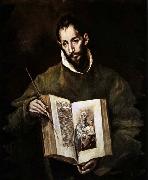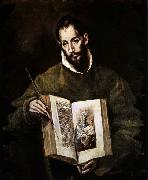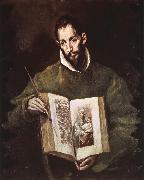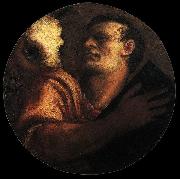Wholesale Oil Painting No Minimum |
|||||||||||
|
|
|||||||||||

|
|||||||||||
|
|
|
||||||||
HALS, FransDutch painter (b. 1580, Antwerpen, d. 1666, Haarlem). |
||||||||
|
|
||||||||
St Luke
St Luke Painting ID:: 29564 |
c. 1625
Oil on canvas, 70 x 55 cm c. 1625 Oil on canvas, 70 x 55 cm |
|||||||
|
|
||||||||
GRECO, ElGreek-born Spanish Mannerist Painter, 1541-1614 Greek painter, designer and engraver, active in Italy and Spain. One of the most original and interesting painters of 16th-century Europe, he transformed the Byzantine style of his early paintings into another, wholly Western manner. He was active in his native Crete, in Venice and Rome, and, during the second half of his life, in Toledo. He was renowned in his lifetime for his originality and extravagance and provides one of the most curious examples of the oscillations of taste in the evaluation of a painter, |
||||||||
|
|
||||||||
|
|
St Luke
St Luke Painting ID:: 43763 |
Oil on canvas,
98 x 72 cm Oil on canvas, 98 x 72 cm |
||||||
|
|
||||||||
El GrecoGreek-born Spanish Mannerist Painter, 1541-1614 Considered a representative of late Renaissance Spanish art, El Greco was actually born in Greece, on the island of Crete. After studying in Venice under Titian, El Greco settled in Toledo, Spain in 1577. At the time he was wildly popular, his emotionally religious paintings being just the ticket for the hometown of the Spanish Inquisition. After his death his work was largely ignored until the beginning of the 20th century; now he considered one of the inspired geniuses of Western art. His distinctive style features bold shapes and colors, with elongated and slightly distorted figures. In Toledo El Greco was in constant demand and liked living large: he maintained a private orchestra to accompany his meals. |
||||||||
|
|
||||||||
|
|
St Luke
St Luke Painting ID:: 52651 |
1605-10 Oil on canvas, 98 x 72 cm 1605-10 Oil on canvas, 98 x 72 cm |
||||||
|
|
||||||||
El GrecoGreek-born Spanish Mannerist Painter, 1541-1614 Considered a representative of late Renaissance Spanish art, El Greco was actually born in Greece, on the island of Crete. After studying in Venice under Titian, El Greco settled in Toledo, Spain in 1577. At the time he was wildly popular, his emotionally religious paintings being just the ticket for the hometown of the Spanish Inquisition. After his death his work was largely ignored until the beginning of the 20th century; now he considered one of the inspired geniuses of Western art. His distinctive style features bold shapes and colors, with elongated and slightly distorted figures. In Toledo El Greco was in constant demand and liked living large: he maintained a private orchestra to accompany his meals. |
||||||||
|
|
||||||||
|
|
St Luke
St Luke Painting ID:: 53601 |
mk233
c.1605-1610
Oil on canvas
98x72cm
mk233 c.1605-1610 Oil on canvas 98x72cm |
||||||
|
|
||||||||
Frans Hals1580-1666 Frans Hals Galleries In the field of group portraiture his work is equalled only by that of Rembrandt. Hals's portraits, both individual and group, have an immediacy and brilliance that bring his sitters to life in a way previously unknown in the Netherlands. This effect, achieved by strong Baroque designs and the innovative use of loose brushstrokes to depict light on form, was not to the taste of critics in the 18th century and the early 19th, when his work was characterized as lazy and unfinished. However, with the rise of Realism and, later, Impressionism, Hals was hailed as a modern painter before his time. Since then his works have always been popular. |
||||||||
|
|
||||||||
|
|
St Luke
St Luke Painting ID:: 84464 |
ca. 1625(1625)
Medium Oil on canvas
cyf ca. 1625(1625) Medium Oil on canvas cyf |
||||||
|
|
||||||||
TitianItalian High Renaissance Painter, ca.1485-1576 Italian painter active in Venice. As a young man he was taught by the Bellini family and worked closely with Giorgione. His early works are so similar in style to Giorgione's as to be indistinguishable, but soon after Giorgione's early death Titian established himself as the leading painter of the Republic of Venice. Among his most important religious paintings is the revolutionary and monumental Assumption (1516 ?C 18) for Santa Maria dei Frari, in which the Virgin ascends to heaven in a blaze of colour accompanied by a semicircle of angels. Titian was also interested in mythological themes, and his many depictions of Venus display his work's sheer beauty and inherent eroticism. Bacchus and Ariadne (1520 ?C 23), with its pagan abandon, is one of the greatest works of Renaissance art. Titian was sought after for his psychologically penetrating portraits, which include portrayals of leading Italian aristocrats, religious figures, and Emperor Charles V. He reached the height of his powers in The Rape of Europa (c. 1559 ?C 62), one of several paintings done for Philip II of Spain. He was recognized as supremely gifted in his lifetime, and his reputation has never declined. |
||||||||
|
|
||||||||
|
|
St Luke
St Luke Painting ID:: 88795 |
first half of 16th century
Medium Oil on oak panel
cyf first half of 16th century Medium Oil on oak panel cyf |
||||||
|
|
||||||||
PontormoItalian Mannerist Painter, 1494-ca.1556 Italian painter and draughtsman. He was the leading painter in mid-16th-century Florence and one of the most original and extraordinary of Mannerist artists. His eccentric personality, solitary and slow working habits and capricious attitude towards his patrons are described by Vasari; his own diary, which covers the years 1554-6, further reveals a character with neurotic and secretive aspects. Pontormo enjoyed the protection of the Medici family throughout his career but, unlike Agnolo Bronzino and Giorgio Vasari, did not become court painter. His subjective portrait style did not lend itself to the state portrait. He produced few mythological works and after 1540 devoted himself almost exclusively to religious subjects. His drawings, mainly figure studies in red and black chalk, are among the highest expressions of the great Florentine tradition of draughtsmanship; close to 400 survive, forming arguably the most important body of drawings by a Mannerist painter. |
||||||||
|
|
||||||||
|
|
St Luke
St Luke Painting ID:: 98291 |
circa 1525(1525)
Medium oil on panel
cyf circa 1525(1525) Medium oil on panel cyf |
||||||
|
|
||||||||
|
Pontormo Italian Mannerist Painter, 1494-ca.1556 Italian painter and draughtsman. He was the leading painter in mid-16th-century Florence and one of the most original and extraordinary of Mannerist artists. His eccentric personality, solitary and slow working habits and capricious attitude towards his patrons are described by Vasari; his own diary, which covers the years 1554-6, further reveals a character with neurotic and secretive aspects. Pontormo enjoyed the protection of the Medici family throughout his career but, unlike Agnolo Bronzino and Giorgio Vasari, did not become court painter. His subjective portrait style did not lend itself to the state portrait. He produced few mythological works and after 1540 devoted himself almost exclusively to religious subjects. His drawings, mainly figure studies in red and black chalk, are among the highest expressions of the great Florentine tradition of draughtsmanship; close to 400 survive, forming arguably the most important body of drawings by a Mannerist painter. St Luke circa 1525(1525) Medium oil on panel cyf |
||||||||
|
|
||||||||
|
Prev Next
|
||||||||
|
|
||||||||
|
Related Paintings to Pontormo :. |
||||||||
|
|
||||||||
|
CONTACT US |







